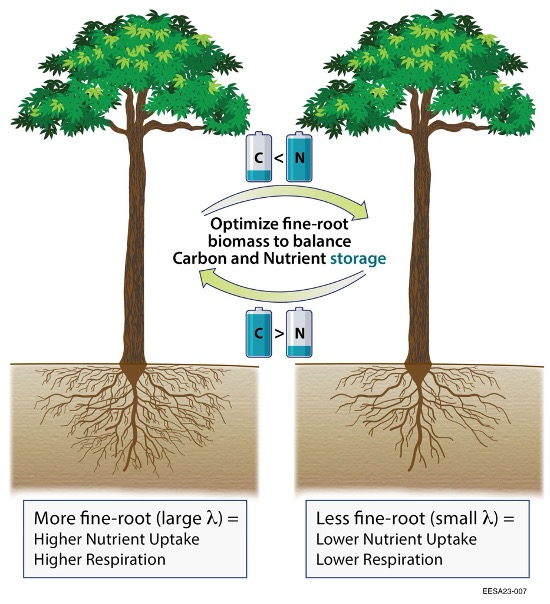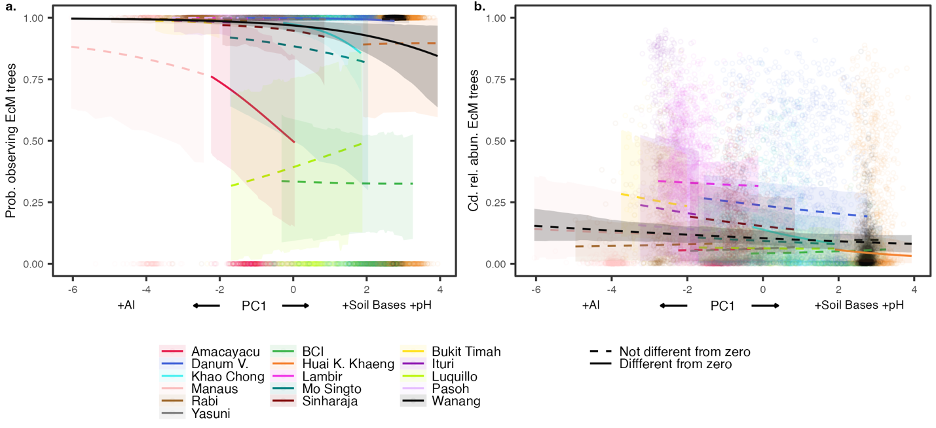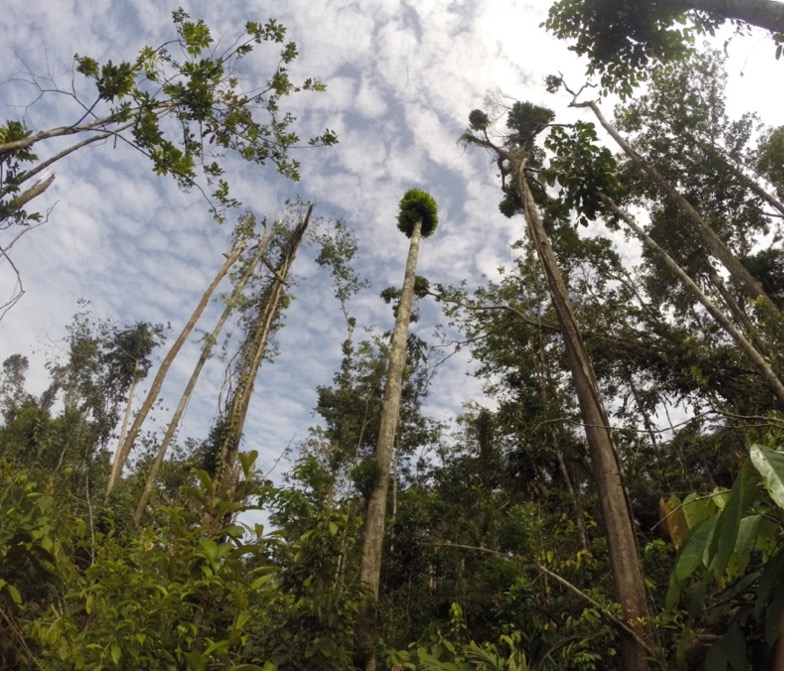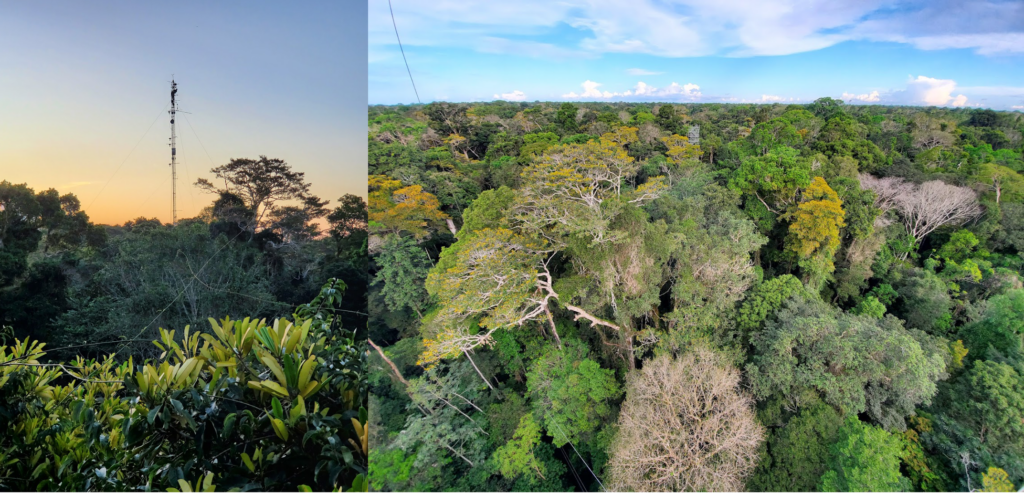Berkeley Lab Scientists using ground-based observations of soil moisture (SM) data from the Next-Generation Ecosystem Experiment-Tropics (NGEE-Tropics) have shown that the NASA Soil Moisture Active Passive (SMAP) satellite has serious limitations in tropical rainforests. Ground-based observations of SM data was used to calibrate NASA SMAP but this calibration is site-dependent.
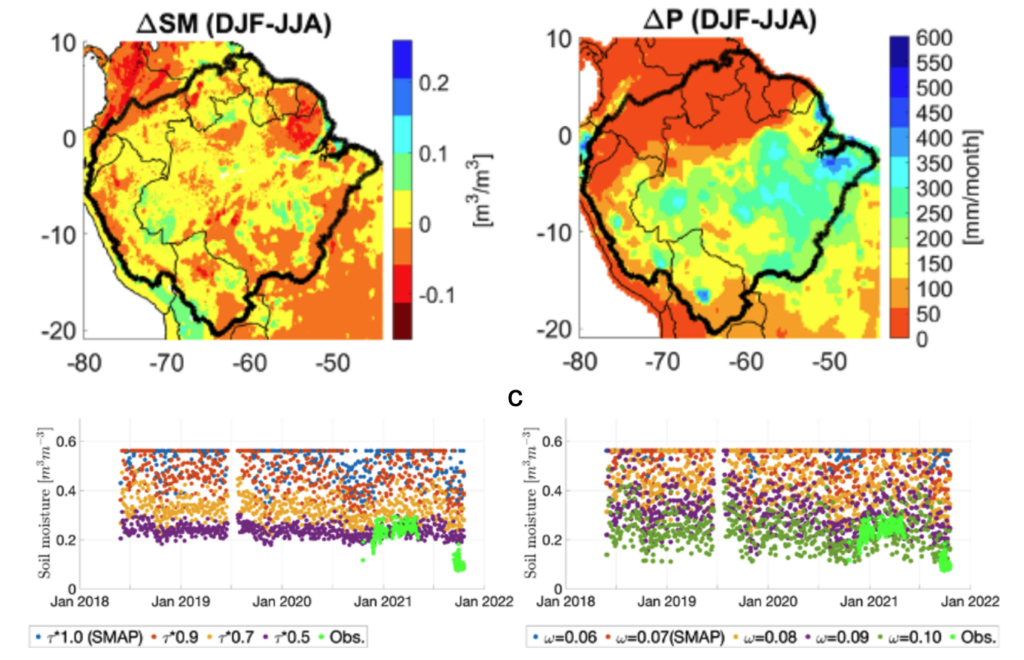
NASA SMAP soil moisture shows little season variation (a), despite significant seasonal variation in rainfall (b). Based-period 2015-2019. Rainfall data is from Global Precipitation Measurements (GPM). (c) Sensitivity test of the t-w model used by SMAP algorithm to determine soil moisture at the NGEE-Tropics core site in Manaus. Image courtesy of authors.
The Science
Soil moisture (SM) is crucial for the Earth’s ecosystem, impacting climate and vegetation health. Obtaining in situ observations of SM is labor-intensive and complex, particularly in remote and densely vegetated regions like the Amazon rainforest. NASA’s Soil Moisture Active and Passive (SMAP) mission, utilizing an L-band radiometer, aims to monitor global SM. Yet, the performance of NASA SMAP SM over tropical forests has not been investigated due to scarce in-situ measurements. This study assessed and analyzed the SMAP SM retrievals in the Amazon, employing the single-channel algorithm (SCA) and adjusting vegetation optical depth (τ) and single scattering albedo (ω), two key vegetation parameters. The SMAP SM deviated substantially from the in-situ SM. However, calibrating τ and ω values, characterized by a lower τ, resulted in better agreement with the in-situ measurements.
The Impact
Our study emphasizes the pressing need for innovative methodologies to accurately retrieve SM in high vegetation water content regions like the Amazon rainforest using SMAP data.
Contact
Robinson Negrón-Juárez
Lawrence Berkeley National Laboratory
robinson.inj@lbl.gov
Funding
This study is sponsored by NASA SMAP Science Team Funding under agreement 80HQTR21T0064. Manaus soil moisture data is funded by the Next Generation Ecosystem Experiments-Tropics, funded by the U.S. Department of Energy, Office of Science, Office of Biological and Environmental Research.
Publications
Cho K, Negron-Juarez R, Colliander A, Cosio E, Salinas N, Araujo A, Chambers J, Wan J, Calibration of the SMAP soil moisture retrieval algorithm to reduce bias over the Amazon rainforest, IEEE Journal of Selected Topics in Applied Earth Observations and Remote Sensing (2024), doi: http://doi.org/10.1109/JSTARS.2024.3388914
